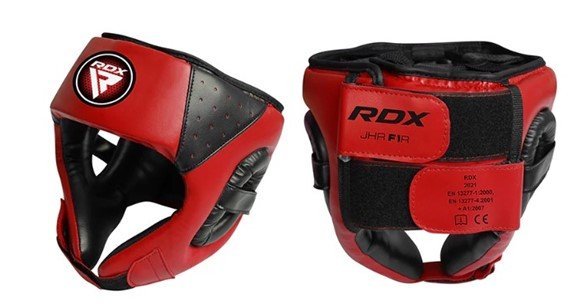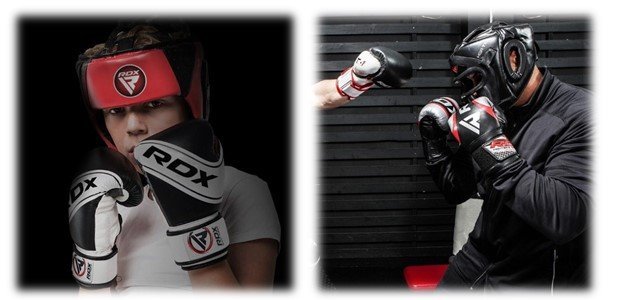Head Guards: Essential Protection for Combat Sports
Head guards are a crucial piece of protective gear in combat sports, providing necessary protection to prevent injuries and ensure safe training sessions. Whether you're a beginner or a seasoned athlete, understanding the importance and proper use of head guards can make a significant difference in your training experience and safety.

Head guards are a crucial piece of protective gear in combat sports, providing necessary protection to prevent injuries and ensure safe training sessions. Whether you're a beginner or a seasoned athlete, understanding the importance and proper use of head guards can make a significant difference in your training experience and safety.
What are Head Guards?
Head guards, also known as headgear, are padded helmets worn during combat sports to protect the head from injuries. They are designed to absorb impact, reduce the risk of cuts and bruises, and protect the skull and brain from concussive forces.
Importance of Head Guards in Combat Sports:
In combat sports like boxing, MMA, Muay Thai, and Taekwondo, head guards are essential for safety. They allow athletes to spar and compete with reduced risk of head injuries, making training sessions more productive and less dangerous.
Types of Head Guards:
Boxing Head Guards:
Boxing head guards are designed to protect against punches. They often feature thick padding around the cheeks, forehead, and chin to absorb impact and reduce the risk of cuts and bruises.
MMA Head Guards:
MMA head guards need to provide protection against both punches and kicks. They are usually more streamlined to offer better visibility and mobility.
Muay Thai Head Guards:
Muay Thai head guards are similar to boxing head guards but often include additional padding to protect against elbow strikes and high kicks.
Taekwondo Head Guards:
Taekwondo head guards are typically lighter and focus on protecting against high-speed kicks. They often have more open designs to comply with competition rules.
Choosing the Right Head Guard:
Purpose of Use:
Consider the primary sport you’ll be using the head guard for, as different sports have different protection needs.
Material and Padding:
Look for high-quality materials and adequate padding. Leather and synthetic leather are common for durability, while multi-layer foam padding offers good shock absorption.
Fit and Comfort:
A well-fitted head guard should be snug but comfortable. Adjustable straps and closures help ensure a secure fit without being too tight.
Brand Reputation:
Choose brands recognized for their quality and reliability. RDX Sports in UK; ever last, Winning, Venom, and Hayabusa are some of the top choices among athletes.
Benefits of Using Head Guards:
Enhanced Safety:
Head guards significantly reduce the risk of cuts, bruises, and concussions, making training safer.
Injury Prevention:
By absorbing and dispersing impact, head guards help prevent serious injuries, allowing you to train consistently.
Confidence in Sparring:
Wearing a head guard can boost your confidence, enabling you to focus more on technique and less on avoiding injury.
Extended Training Sessions:
With the added protection of a head guard, you can train longer and harder without compromising your safety.
Key Features to Look For:
Impact Absorption:
Good head guards have multi-layer foam padding that absorbs and disperses impact effectively.

Vision and Visibility:
Ensure the head guard offers a wide field of vision, so you can see your opponent clearly during sparring.
Breathability:
Look for head guards with ventilation to keep you cool and comfortable during intense training sessions.
Adjustability:
Adjustable straps and closures allow for a customized fit, ensuring the head guard stays in place during training.
How to Properly Fit a Head Guard:
Measuring Your Head:
Use a flexible measuring tape to measure the circumference of your head, just above your eyebrows and ears.
Adjusting Straps and Closures:
Ensure all straps and closures are adjusted to provide a snug fit. The head guard should stay in place without shifting during movement.
Checking for Secure Fit:
Perform some basic movements to check if the head guard remains secure. It should not be too tight, causing discomfort, or too loose, causing it to move around.
Common Fitting Mistakes:
Avoid common mistakes like wearing the head guard too low or too high on the forehead, as this can compromise protection.
Maintaining and Caring for Your Head Guard:
Cleaning and Sanitizing:
After each use, wipe down your head guard with a disinfectant wipe or mild soap and water to prevent bacteria build-up.
Storage Tips:
Store your head guard in a cool, dry place, away from direct sunlight to prevent material degradation.
Inspecting for Wear and Tear:
Regularly inspect your head guard for signs of wear and tear, such as cracks in the padding or loose stitching.
When to Replace:
Replace your head guard if you notice significant wear or if it no longer fits securely. Typically, head guards should be replaced every 1-2 years, depending on frequency of use.
Head Guards for Different Skill Levels:
Beginners:
Beginners should look for head guards with ample padding and easy adjustability to ensure maximum protection and comfort.
Intermediate:
Intermediate athletes may prefer head guards that offer a balance of protection and mobility, allowing for more advanced techniques.
Advanced:
Advanced fighters often choose head guards with streamlined designs that offer protection without compromising visibility and movement.
Using Head Guards in Various Combat Sports:
Boxing:
Boxing head guards provide essential protection against punches, helping boxers train safely and effectively.
MMA:
MMA head guards protect against a variety of strikes, including punches, kicks, and elbows, offering comprehensive protection for mixed martial artists.
Muay Thai:
Muay Thai head guards are designed to absorb impact from powerful kicks and elbow strikes, crucial for safe training in this discipline.
Taekwondo:
Taekwondo head guards are lightweight and designed to protect against high-speed kicks, allowing for agile movements during sparring.
Head Guards for Kids:
Importance of Safety for Children:
Head guards are crucial for kids to protect their developing brains and skulls during training and competition.
Special Features for Kids' Head Guards:
Kids' head guards often feature extra padding, bright colours, and fun designs to encourage use and ensure safety.
Recommended Products:
Brands like RDX, Sanibel, and Pro Force offer high-quality head guards specifically designed for children.
Conclusion:
Head guards are an indispensable component of safety gear in combat sports. We've explored various types of head guards tailored for boxing, MMA, Muay Thai, and Taekwondo, each designed to meet the specific needs of these sports. When choosing a head guard, factors such as purpose of use, material and padding, fit and comfort, and brand reputation are crucial.
What's Your Reaction?











![Wireless Connectivity Software Market Size, Share | Statistics [2032]](https://handyclassified.com/uploads/images/202404/image_100x75_661f3be896033.jpg)




